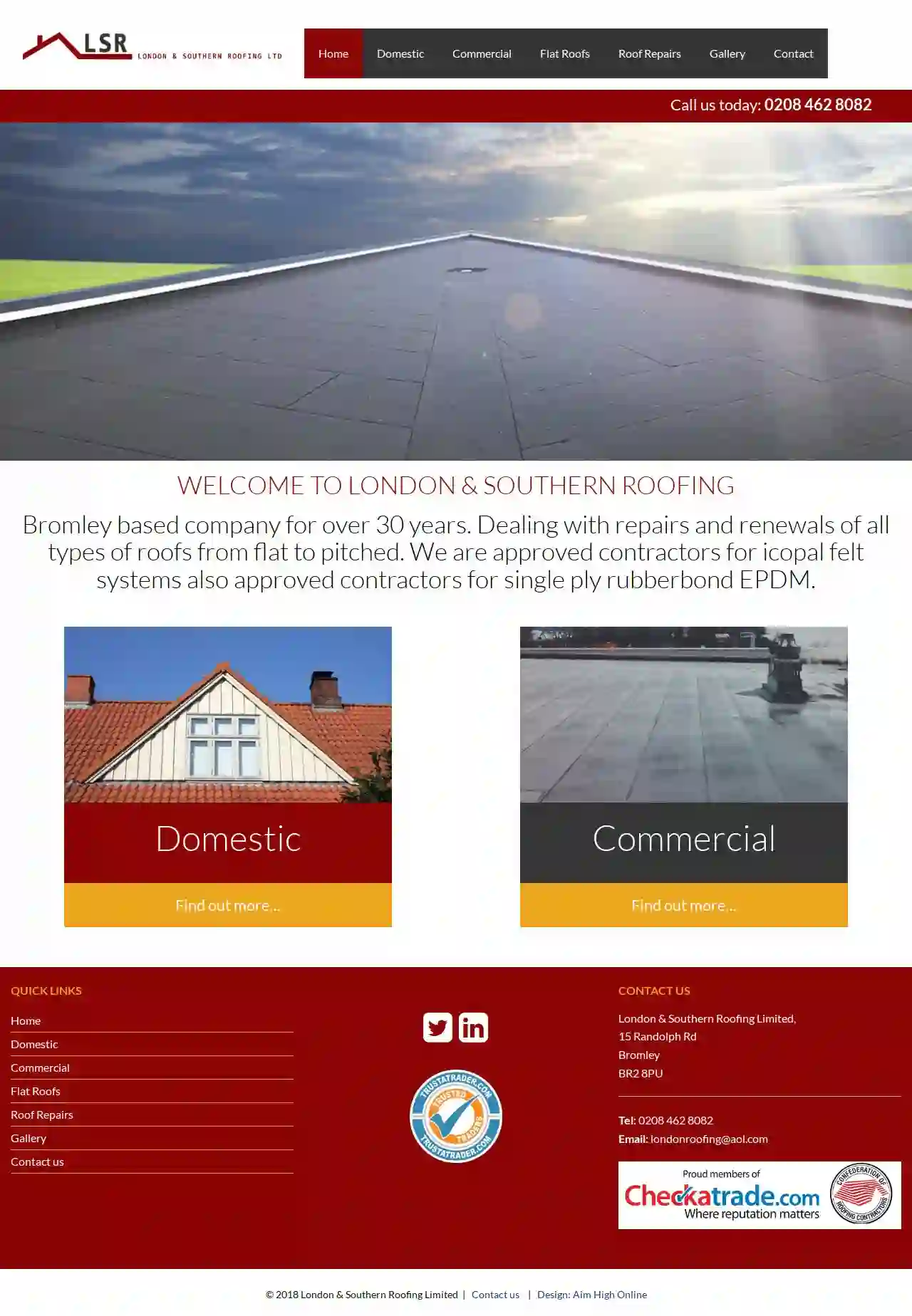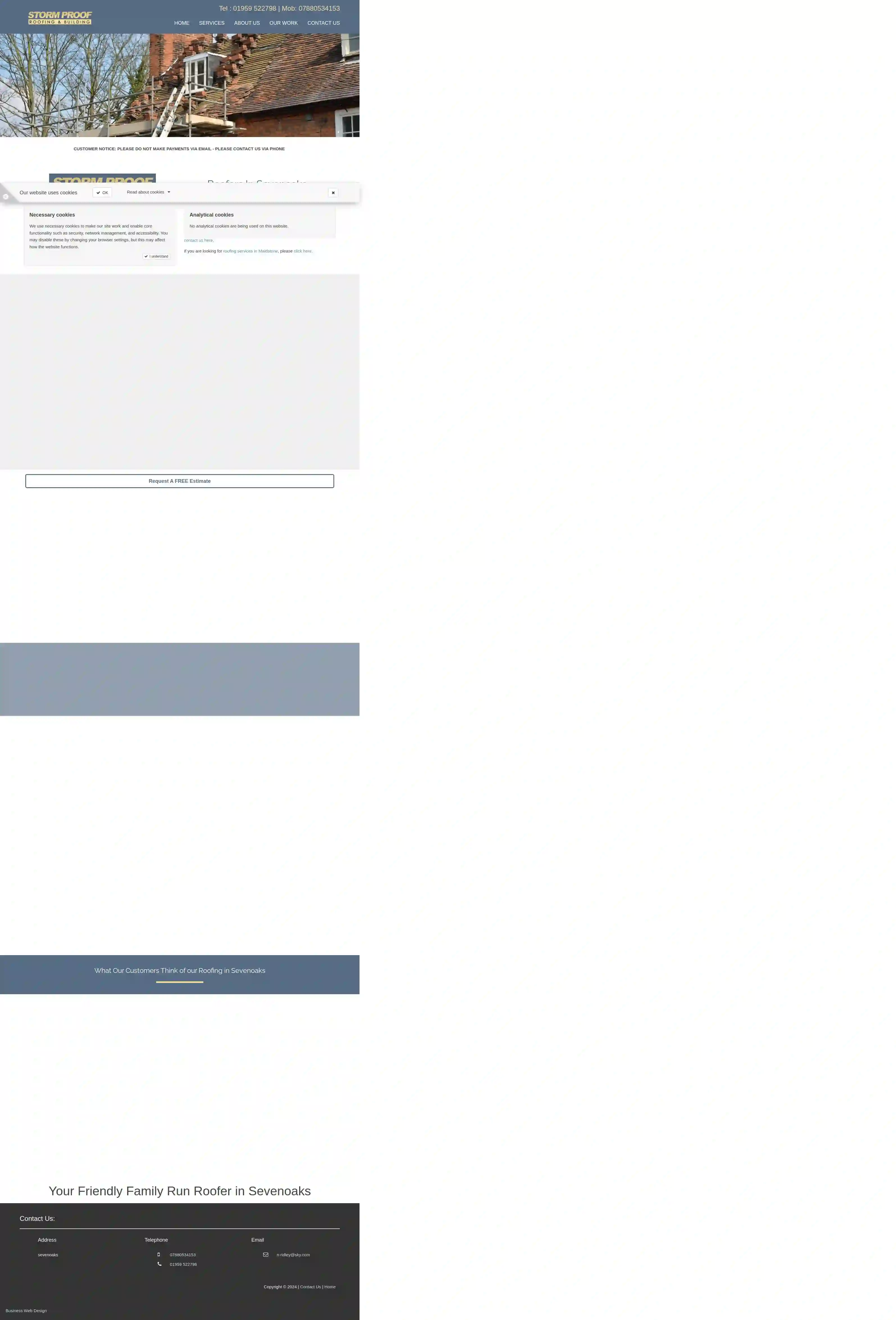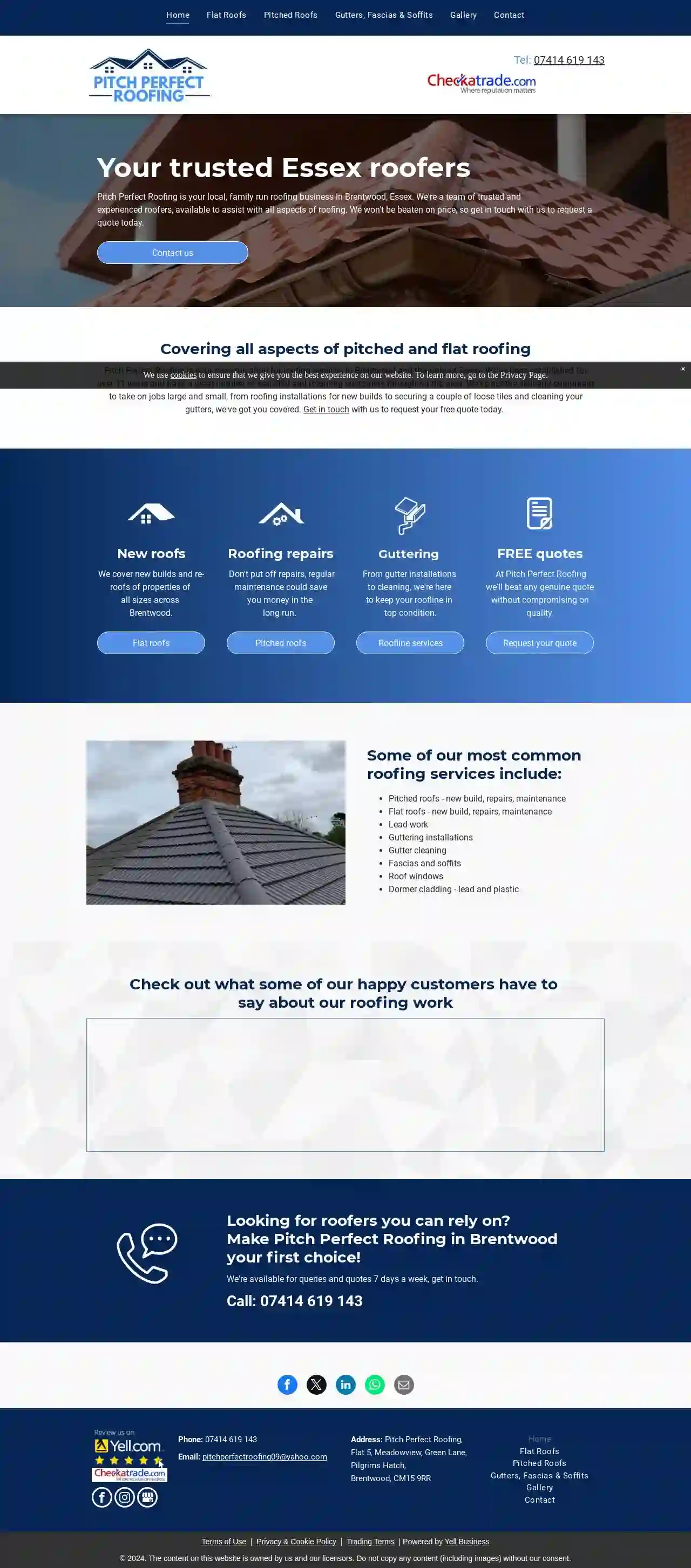Roofing Companies Erith
Find top Roofing Services in Erith
Get multiple Roofers quotes for your project today! Compare profiles, reviews, accreditations, portfolio, etc... and choose the best deal.

Athena Conservatories
51 reviewsAbbey House, Arena Business centre, Farnborough, GU14 7NA, GBAt Athena Conservatories, we understand the importance of unlocking the full potential of your property. Whether you're looking to replace your old, energy-inefficient conservatory with a fully insulated, bespoke solid conservatory roof, or you're interested in building a custom-designed garden room to add value and extra space to your home, we have the perfect solution for you. Our expert team of professionals have over 40 years of experience in the home improvement sector, and we pride ourselves on providing only the highest quality products and services. From windows and doors to new conservatories, conservatory roof replacements and insulated ceilings, we offer a wide range of options to suit every need and budget. As you browse through our website, you'll be able to see our portfolio of completed work and browse through our range of products. Plus, you can request brochures and get a sense of the kind of before and after transformations we can achieve. With every aspect of our work personalizable, from light fittings to tile color, we'll work closely with you to create a custom-built home within a home.
- Services
- Why Us?
- Accreditations
- Our Team
- Testimonials
- Gallery
Get Quote
London & Southern Roofing Co Ltd
45 reviews15 Randolph Rd, Bromley, BR2 8PU, GBWELCOME TO LONDON & SOUTHERN ROOFING Bromley based company for over 30 years. Dealing with repairs and renewals of all types of roofs from flat to pitched. We are approved contractors for icopal felt systems also approved contractors for single ply rubberbond EPDM. Domestic Find out more... Commercial Find out more...
- Services
- Why Us?
- Gallery
Get Quote
Storm Proof Roofing & Building
GBStorm Proof Roofing is a family-run roofing business based in Sevenoaks, Kent, with over 30 years of experience serving the local area. We specialize in providing high-quality roofing services, including new roof installations, roof repairs, and a range of building services such as garden wall construction. Our team of experienced roofers is dedicated to delivering a reliable, friendly, and professional service. We understand the importance of a sturdy and well-maintained roof, and we strive to ensure all our work is completed to the highest standards. We use quality materials and always leave our work sites clean and tidy. Whether you need a minor repair or a complete roof replacement, Storm Proof Roofing is here to help. Contact us today for a free estimate with no obligation.
- Services
- Why Us?
- Our Team
- Gallery
Get Quote
Granpol Metal Roofing LTD
44 reviewsGBGranpol Metal Roofing Ltd. is a leading provider of high-quality metal roofing and siding services in Edmonton and surrounding areas. With over 50 years of experience in the industry, we are committed to delivering exceptional craftsmanship, durable products, and outstanding customer service. We specialize in both residential and commercial projects, offering a wide range of metal roofing and siding options to suit every need and budget. Our team of skilled professionals is dedicated to providing personalized solutions and ensuring complete customer satisfaction. Why Choose Granpol Metal Roofing? Durability: Our metal roofing systems are designed to withstand harsh weather conditions, including heavy snow, wind, and hail. Energy Efficiency: Metal roofs reflect sunlight, helping to reduce energy costs and keep your home cooler in the summer. Longevity: With a 50-year warranty, our metal roofs are built to last for generations. Aesthetics: We offer a variety of styles and colors to complement your home's architecture. Sustainability: Metal is a recyclable material, making it an environmentally friendly choice. Contact us today for a free consultation and estimate. We'll be happy to answer any questions you may have about our services.
- Services
- Why Us?
- Gallery
Get Quote
Clear Choice Roofing & Exteriors Inc
2.73 reviewsGBClear Choice Roofing and Exteriors Inc. is an Alberta-based company incorporated on March 22, 2013, by owner/operator Cory Ward. Clear Choice is proud to provide excellent customer service and make your residential or commercial projects successful and stress-free. We have the ability and have completed many projects in all different sectors of the industry while offering a Lifetime Warranty on all workmanship. This compels us to keep current on new product developments and processes to better meet our customers’ needs. Our commitment to quality workmanship is shown, not only through our Lifetime Warranty but through our registration with the Better Business Bureaus in both Red Deer and Edmonton. It is important to us that you feel fully informed and comfortable through the entire process of your project. Our consultations and inspections properly assess what your home requires. We promptly answer all your questions and provide timely communication of delivery and installation dates. We carry physical samples of every commonly utilized and high-quality exterior products, in a vast number of colours and styles. All Project Managers at Clear Choice Roofing and Exteriors are HAAG Certified. Give yourself peace of mind! Go with the pros! Go with the certified!
- Services
- Why Us?
- Our Team
- Testimonials
- Gallery
Get Quote
PITCH PERFECT ROOFING
4.817 reviewsGreen Lane, Pilgrims Hatch, Flat 5 Meadowview, Brentwood, CM15 9RR, GBPitch Perfect Roofing is a family-run roofing business based in Brentwood, Essex. With over 11 years of experience, we provide a comprehensive range of roofing services for both pitched and flat roofs. From new builds and re-roofs to repairs and maintenance, we've got you covered. We pride ourselves on our commitment to quality, using only the best materials and ensuring all our work comes with a full warranty. Our team of trusted and experienced roofers is dedicated to providing a professional and reliable service, and we're always happy to offer free quotes. We're available 7 days a week to answer your queries and provide expert advice on all your roofing needs.
- Services
- Why Us?
- Testimonials
- Gallery
Get Quote
BOROUGH ROOFING ️ ️ ️ ️ ️
55 reviewsAldershot, GU11 1NY, GBBorough Roofing is a Aldershot based roofer boasting an outstanding reputation. Rated 5/5 based on 42 reviews. We had water come in are bedroom and Vincent saw the problem gave me a quote and sorted the work out ASAP we would recommend this company. Checkatrade Customer 2023-06-22. Vincent and Matthew came out and quoted us for a new flat roof for our garage. We were very happy with the price so went ahead. Work started quickly and was completed to a very good standard. Lovely approachable guys! Would highly recommend them ??
- Services
- Why Us?
- Our Team
- Testimonials
- Gallery
Get Quote
Russells Roofing Service Ltd
8 The Old Mill, Bexley High St., Bexley, Kent, DA5 1JX, GBRussells Roofing Services Ltd is a team of qualified and professional roofing contractors with extensive experience in all roofing services, including repairs, maintenance, and replacements. We pride ourselves on carrying out quality roofing repairs to ensure your property is protected and free from damage. As your trusted local roofing company, we work quickly and carefully to restore your roof safely and efficiently. We don't just replace and maintain roofs and guttering systems; we also take on challenging contracts involving the restoration of houses damaged by fire and floods. With over 30 years in the roofing industry, we've built excellent relationships with top UK providers and manufacturers, ensuring we only use the best materials on your property. We are proud to be accredited by Checkatrade and Homepro. Furthermore, we handle asbestos legally, are fully insured, and hold an Environment Agency carrier's license.
- Services
- Why Us?
- Accreditations
- Our Team
- Gallery
Get Quote
Topline Roofing Services Ltd
51 reviews1000 Sheppard Ave E, Suite 200, Toronto, M1S 1S1, GBMy Surface Solutions is a family-owned and operated business serving the greater Toronto area. We specialize in providing high-quality surface preparation and coating solutions for a wide range of applications. With over 20 years of combined experience, our team of skilled professionals is dedicated to delivering exceptional results that exceed our clients' expectations. We pride ourselves on our commitment to quality, safety, and customer satisfaction. Whether you need concrete resurfacing, epoxy flooring, or other specialized coatings, My Surface Solutions has the expertise and resources to handle your project efficiently and effectively. Our mission is to provide our clients with the highest quality surface preparation and coating solutions, while maintaining a strong commitment to safety, environmental responsibility, and customer satisfaction. We strive to build long-lasting relationships with our clients based on trust, integrity, and exceptional service. At My Surface Solutions, we understand that your surfaces are an important part of your business or home. That's why we take a meticulous approach to every project, ensuring that the surface is properly prepared and coated to withstand the demands of its environment. We use only the highest quality materials and equipment to deliver durable and long-lasting results.
- Services
- Why Us?
Get Quote
Expert Flat Roofing (Flat Roofing Specialist)
Expert Flat Roofing Limited, Bromley, GBExpert Flat Roofing Limited is a family-run business based in Bromley, Kent, serving London and the surrounding counties. With over 40 years of experience, they specialize in providing comprehensive flat roofing services, focusing on mastic asphalt and built-up felt for both residential and commercial clients. They offer a range of solutions to fit any budget and requirement, including asphalt balconies, walkways, and steps. Their highly trained technicians have extensive experience in high-performance felt, roof windows and skylights, lead trim, and gutter replacement. They also undertake complete roof replacement and remedial roofing repair work. Expert Flat Roofing prides itself on competitive pricing, no upfront payments, and a 10-year guarantee on all new roofs. They serve a diverse clientele, including home owners, landlords, property management companies, builders, local authorities, trusts, and the public sector.
- Services
- Why Us?
- Accreditations
- Testimonials
- Gallery
Get Quote
Over 12,314+ Roofing Contractors onboarded
Our roofing experts operate in Erith and surroundings!
Roofyng.co.uk has curated and vetted the Best Roofing Companies in and around Erith. Find a trustworthy pro today.
Frequently Asked Questions About Roofing Companies
- Metal roofs: Reflect sunlight, reducing cooling costs.
- Tile roofs: Offer thermal mass, regulating temperature.
- Cool roofs: White or light-colored roofs with high solar reflectance.
- Green roofs: Vegetated roofs providing insulation and reducing heat absorption.
- Asphalt Shingles: 20-30 years
- Metal Roofing: 40-70 years
- Tile Roofing: 50-100 years or more (clay and slate)
- Flat Roofing: 15-30 years (depending on material)
- Slate: 100 years or more
- Wood Shakes or Shingles: 30-50 years (with proper maintenance)
- Age: If your roof is nearing or exceeding its expected lifespan, it's wise to consider replacement.
- Multiple Leaks: Several leaks or leaks that reappear after repairs suggest a widespread problem.
- Extensive Damage: Large areas of damaged, missing, or deteriorated roofing materials might be too costly or difficult to repair effectively.
- Sagging or Structural Issues: Sagging, deflection, or other structural issues indicate a compromised roof that needs replacement.
- Granule Loss (Asphalt Shingles): Significant granule loss indicates weathering and reduced protection.
- Curling or Buckling Shingles: Signifies age or improper ventilation.
- Increased Energy Bills: A poorly insulated roof can lead to higher heating and cooling costs.
What are some energy-efficient roofing options?
How long does a roof typically last?
What is the difference between a roofer and a general contractor?
Roofer: Specializes in roof installations, repairs, and replacements. They have expertise in roofing materials, techniques, and safety practices specific to roofing.
General Contractor: Oversees and manages entire construction projects, including hiring and coordinating subcontractors, such as roofers, electricians, plumbers, etc. They handle overall project planning, scheduling, and budgeting.
For roofing projects, it's generally best to hire a roofing contractor who specializes in roof work.
What are the signs that my roof needs to be replaced?
What are some energy-efficient roofing options?
- Metal roofs: Reflect sunlight, reducing cooling costs.
- Tile roofs: Offer thermal mass, regulating temperature.
- Cool roofs: White or light-colored roofs with high solar reflectance.
- Green roofs: Vegetated roofs providing insulation and reducing heat absorption.
How long does a roof typically last?
- Asphalt Shingles: 20-30 years
- Metal Roofing: 40-70 years
- Tile Roofing: 50-100 years or more (clay and slate)
- Flat Roofing: 15-30 years (depending on material)
- Slate: 100 years or more
- Wood Shakes or Shingles: 30-50 years (with proper maintenance)
What is the difference between a roofer and a general contractor?
Roofer: Specializes in roof installations, repairs, and replacements. They have expertise in roofing materials, techniques, and safety practices specific to roofing.
General Contractor: Oversees and manages entire construction projects, including hiring and coordinating subcontractors, such as roofers, electricians, plumbers, etc. They handle overall project planning, scheduling, and budgeting.
For roofing projects, it's generally best to hire a roofing contractor who specializes in roof work.
What are the signs that my roof needs to be replaced?
- Age: If your roof is nearing or exceeding its expected lifespan, it's wise to consider replacement.
- Multiple Leaks: Several leaks or leaks that reappear after repairs suggest a widespread problem.
- Extensive Damage: Large areas of damaged, missing, or deteriorated roofing materials might be too costly or difficult to repair effectively.
- Sagging or Structural Issues: Sagging, deflection, or other structural issues indicate a compromised roof that needs replacement.
- Granule Loss (Asphalt Shingles): Significant granule loss indicates weathering and reduced protection.
- Curling or Buckling Shingles: Signifies age or improper ventilation.
- Increased Energy Bills: A poorly insulated roof can lead to higher heating and cooling costs.